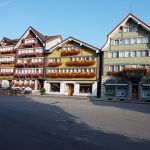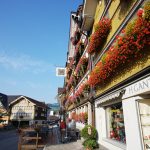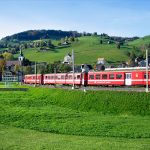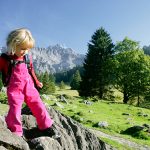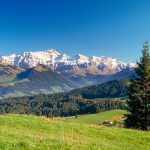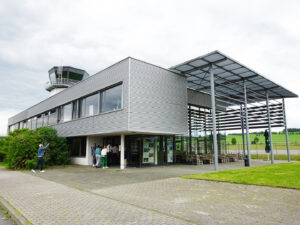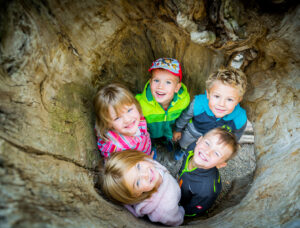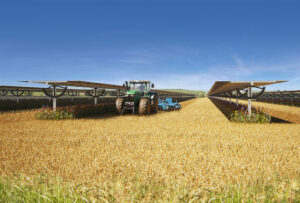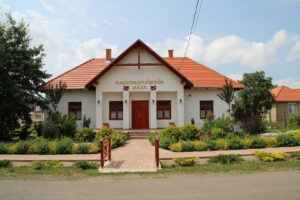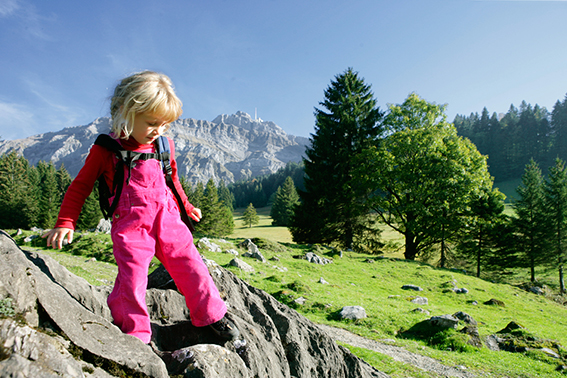
Urnäsch, Appenzell Ausserrhoden, Switzerland
Urnäsch has 2,270 inhabitants and with an area of 4,823 ha. is the largest municipality in area of the canton Appenzell in eastern Switzerland. In the mid-nineties the Urnäsch municipality decided to do something about the loss of jobs and the emigration.
In a widespread population survey ideas were sought that were then discussed under the motto: „Mittenand vorwärts“(together ahead) and evaluated regarding different possible lines of attack. In the process due to the natural preconditions and the existing infrastructure an increased development of tourism was given preference. In 1999 a working group was given the assignment to develop a concrete and practically applicable project. The course was already set at the beginning: Urnäsch could only cope with a gentle, sustainable tourism based on existing potentials. This approach also agrees with the results of an appraisal by ETH-UNS.
The core of the project was a holiday village on a municipal ground that is convenient for traffic which was to be operated by the REKA (Swiss Tourist Office). In conjunction with REKA it was finally agreed to characterise the holiday village by a didactic policy: to promote the understanding, especially of children and young people, for farming and forestry in practice and for the Appenzell cultivated landscape and to demonstrate sustainable farming.
With this decision it was clear that the REKA project was to be embedded in a comprehensive ecological and directed towards strict sustainability village renewal: demonstrative ecological orientation of „Aktivbauernhöfe“(active farms) which was integrated into the project: innovative use of milk; near natural forestry with careful sorting of timber; energy production from biomass; maintenance respectively renovation of historical buildings spread around the village centre.
The proponents of the project pursued further ambitious goals with the holiday village: a demonstration of „Neuen Bauens in Appenzell“ (new building in Appenzell), as far as possible the use of local, non-treated timber, minimal energy consumption and high quality at limited under average costs. The architect collective, Gnaiger/Dietrich/Untertrifaller, from Bregenz, who were selected for the building project, managed to convince the traditional thinking groups of the population that none of the innovative goals could be achieved with a neo-folkloristic building design programme. So finally a compact, two floor, flat construction was chosen that gave a view, had sun all day and was able to be embedded carefully into the existing hilly landscape. At the same time the optical importance of the surrounding grand Appenzell farm buildings and their view of the landscape were kept.
The municipality assigned the project to the newly founded Feriendorf Urnäsch AG that had to come up with a capital of 11 million SF (Swiss francs) from an estimated construction cost of 19 million SF. That obstacle was overcome. More than 800 people bought shares the rest was financed by the canton council of Appenzell Ausserhoden as well as different regional trusts. After several years of preparation and planning the symbolic groundbreaking took place in May 2006 and a good one and a half years later at the beginning of 2008 the finished buildings were handed over to the Swiss tourist office.
The construction of the REKA village triggered off a series of further coordinated, networked and synergy producing projects. Primarily these were the construction of a wood chip heating system to provide heat for the holiday village and several trade and housing buildings and the foundation of the club Urholz by local rooted companies. The goal is to use wood from the region ecologically correctly and produce it a high standard. Last but not least a multipart agricultural regional project should be mentioned that is based on a close interlacing of farming, tourism and trade and is dedicated primarily to the themes milk production, improvement of the agro-tourist infrastructure and nature adventure.
The municipality of Urnäsch is an impressive example of a very successful reversal of trend from emigration to an exemplary innovative location. The heart of these development measures is the erection of the REKA holiday village as a point of reference for sustainable, high quality architecture and building technology in a rural area. Great credit is due to the financing and realisation of the project that was based on an optimal cooperation of trade, science and politics with a strong participation of the population. In addition the holiday village represents what distinguishes Urnäsch as a whole: It stands for an exemplary network of natural, agricultural, social and cultural resources with a new value added change that is in a position to improve job possibilities and the quality of life of the inhabitants.
Evaluated: 2008

